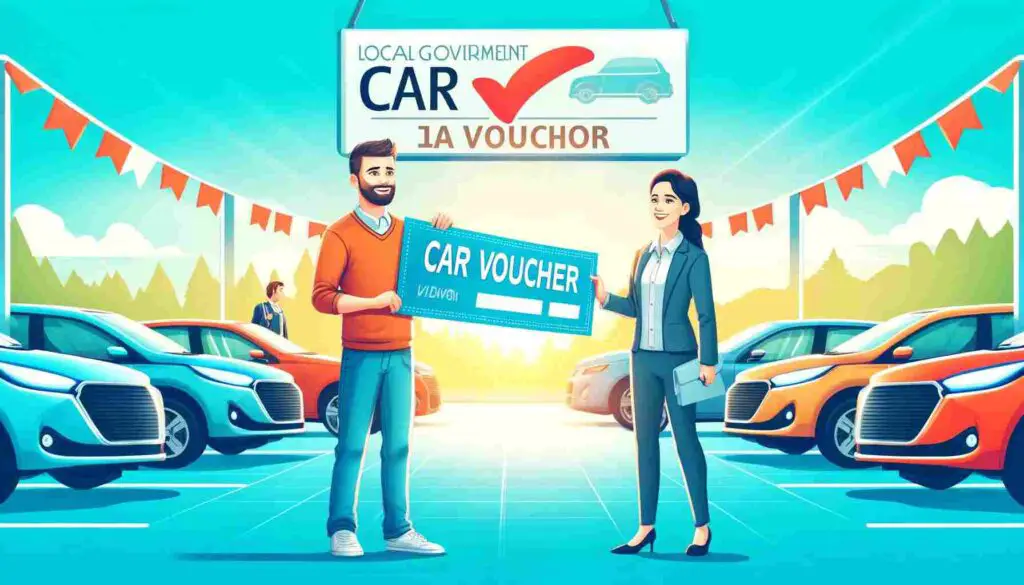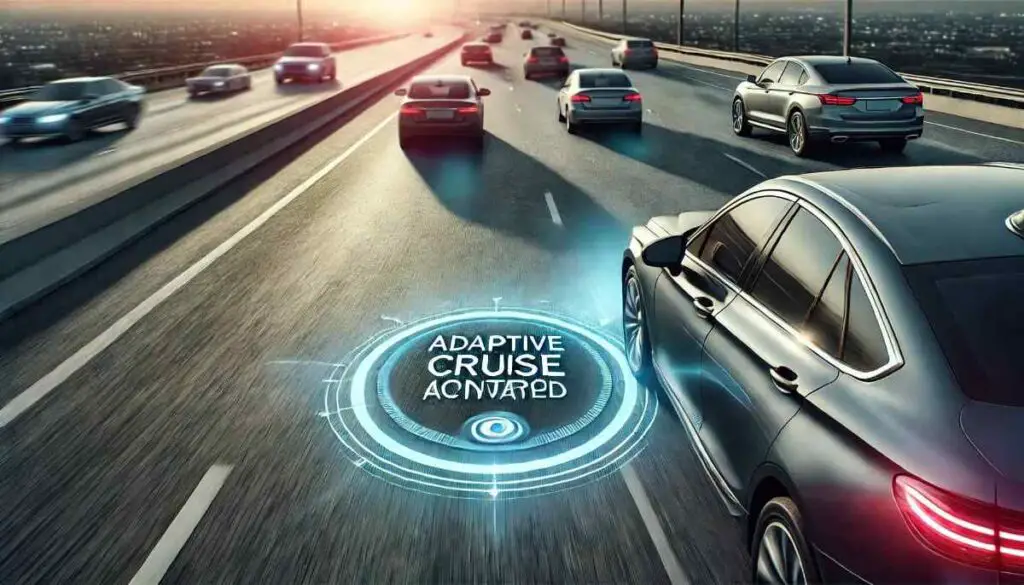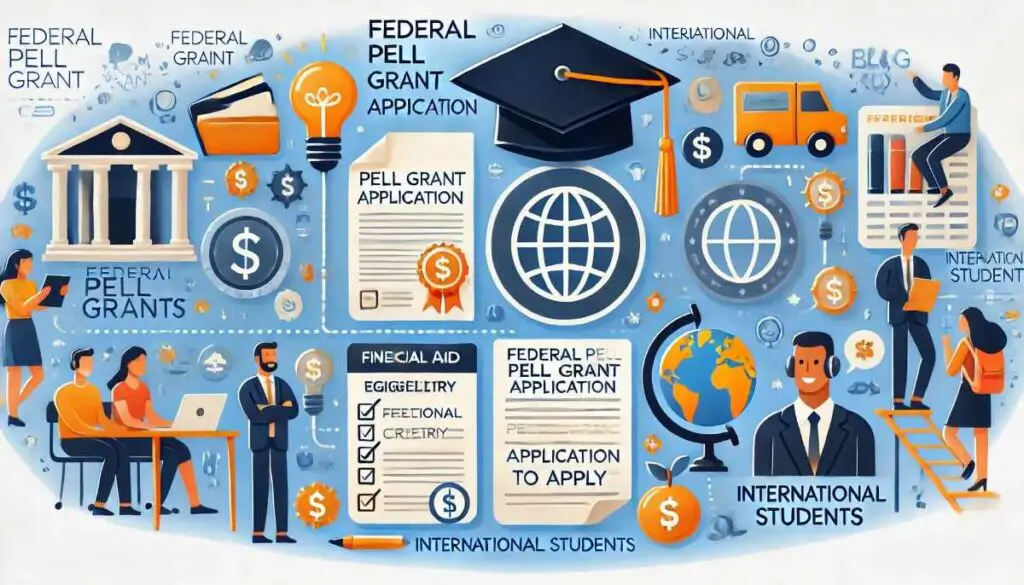In 2025, navigating the world of car leasing can be a complex endeavor, filled with various factors that influence the overall costs of acquiring a vehicle through this popular financial arrangement. To provide you with an extensive guide, we’ll delve into the essentials of car leasing, the factors that impact lease costs, the economic environment, different types of leases, negotiation strategies, additional expenses, and the future of car leasing. Our aim is to empower you with the knowledge needed to make informed decisions while outperforming competitors in the online realm.
Section 1: Basics of Car Leasing
What is car leasing?
Car leasing is a financial arrangement that provides individuals with the opportunity to use a vehicle for a predetermined period while making monthly lease payments. Unlike traditional car ownership, where you gain ownership of the vehicle at the end of the loan term, leasing allows you to use the car without the long-term commitment of ownership.
How does car leasing work?
Car leasing typically follows these key steps:
- Initial Down Payment: When you decide to lease a car, you often need to make an initial down payment, also known as a “capitalized cost reduction” or “cap cost reduction.” This upfront payment is generally lower than the down payment required for purchasing a car, making leasing more accessible to many individuals.
- Monthly Lease Payments: After the initial down payment, you will be required to make monthly lease payments for the duration of your lease term. These payments are calculated based on several factors, including the vehicle’s depreciation, interest, taxes, and any additional fees.
- Lease Term: Lease terms typically range from 24 to 48 months, although other options may be available. The chosen lease term influences your monthly payments and the overall cost of the lease.
- Leasing Company Ownership: It’s essential to understand that during the lease period, the leasing company maintains ownership of the vehicle. You are essentially paying for the depreciation of the car’s value over the lease term.
Leasing vs. Buying: Pros and Cons
Pros of Leasing:
- Lower Initial Costs: One of the primary advantages of leasing is the lower upfront cost compared to buying a new car. This makes it more accessible to individuals who may not have a substantial down payment.
- Frequent Vehicle Updates: Leasing allows you to drive a new vehicle more frequently, typically every two to four years. This means you can enjoy the latest models and technological advancements without the hassle of selling or trading in your car.
- Warranty Coverage: Most leased vehicles are covered by the manufacturer’s warranty throughout the lease term, reducing the costs associated with unexpected repairs.
- Lower Monthly Payments: Monthly lease payments are often lower than loan payments for purchasing the same vehicle. This can free up your monthly budget for other expenses.
Cons of Leasing:
- Mileage Limits: Leases come with mileage limits, typically specified in the lease agreement. Exceeding these limits can result in additional charges, making it less suitable for individuals with long daily commutes.
- No Equity Build-Up: When you lease a car, you do not build equity in the vehicle. At the end of the lease term, you return the car to the leasing company, and ownership remains with them.
- Continuous Payments: Unlike purchasing a car, where payments eventually cease once the loan is paid off, leasing involves ongoing monthly payments as long as you continue to lease vehicles.
Pros of Buying:
- Ownership: Buying a car means you have full ownership of the vehicle once the loan is paid off. You can keep it as long as you desire, which can result in long-term cost savings.
- No Mileage Limits: Unlike leases, there are no mileage restrictions when you own a vehicle. You can drive as much as you want without incurring extra charges.
- Equity Accumulation: Over time, as you pay off the loan, you build equity in the car. This equity can be valuable when you decide to sell or trade in the vehicle.
Cons of Buying:
- Higher Upfront Costs: Purchasing a car typically requires a more substantial down payment compared to leasing. This initial financial commitment can be challenging for some individuals.
- Depreciation: Cars depreciate over time, and as the owner, you bear the full brunt of the vehicle’s depreciation, which can impact its resale value.
- Responsibility for Repairs: As the owner, you are responsible for all maintenance and repair costs once the manufacturer’s warranty expires.
Section 2: Factors Affecting Car Lease Costs
Section 3: The Impact of Economic Changes on Car Leasing
The 2024 Economic Outlook
Understanding the broader economic context is vital when considering car leasing in 2024, as it can have a profound impact on various aspects of the leasing process:
- Interest Rates: The economic outlook can influence central bank policies, which, in turn, affect interest rates. Lower interest rates can make leasing more attractive by reducing financing costs, while higher rates may increase your lease expenses.
- Availability of Vehicles: Economic conditions can impact the production and availability of vehicles. Economic downturns may lead to reduced manufacturing, affecting the variety and quantity of vehicles available for lease.
- Leasing Incentives: Economic conditions can also influence manufacturer incentives. In a competitive market, manufacturers may offer more attractive leasing deals to stimulate sales.
Understanding the 2024 economic outlook and its potential implications allows you to make informed decisions regarding the timing and terms of your lease.
How Inflation Affects Lease Costs
Inflation, the increase in the general price level of goods and services over time, can indirectly impact your car lease costs in several ways:
- Vehicle Prices: Inflation can lead to higher prices for vehicles. As the cost of cars increases, leasing companies may adjust their lease rates to account for these price hikes.
- Maintenance and Repair Costs: Inflation can also affect the cost of maintenance and repairs. Higher prices for parts and services may result in increased expenses during your lease term.
- Interest Rates: Inflation can influence interest rates. Higher inflation rates may lead to higher money factors (interest rates) in lease agreements, potentially raising your monthly payments.
Being aware of inflation trends and their potential effects on your lease costs helps you budget effectively and anticipate any increases in your expenses over the lease term.
Supply Chain Issues and Their Impact
Supply chain disruptions can significantly affect the availability of certain vehicles, impacting leasing options and prices:
- Limited Vehicle Choices: Disruptions in the supply chain, such as shortages of specific components or materials, can lead to limited availability of certain vehicle models. This limitation may reduce your choices when selecting a vehicle to lease.
- Price Volatility: Supply chain issues can lead to price volatility. Fluctuations in vehicle prices may affect your negotiation power and the final terms of your lease agreement.
- Delayed Deliveries: Supply chain disruptions can also result in delays in vehicle deliveries. It’s crucial to consider these potential delays when planning your lease, especially if you have specific timing requirements.
In summary, economic changes in 2024 can impact car leasing through changes in interest rates, vehicle availability, and leasing incentives. Additionally, inflation and supply chain disruptions can indirectly affect your lease costs. Staying informed about the economic landscape allows you to adapt your leasing strategy to align with prevailing conditions and secure the most favorable terms for your lease agreement.
Section 4: Types of Car Leases
Open-End vs. Closed-End Leases
Open-End Leases:
Open-end leases offer flexibility but come with certain risks. Here’s a closer look:
- Flexibility: Open-end leases allow lessees to have more control over the vehicle. At the end of the lease term, you have the option to purchase the vehicle at its predetermined residual value or return it to the leasing company.
- Risk of Depreciation: One of the main features of open-end leases is that the lessee takes on the risk of the vehicle’s depreciation. If the car’s actual value at the end of the lease is lower than the estimated residual value, you may be responsible for covering the shortfall.
- Higher Potential Costs: Because of the risk involved, open-end leases can lead to higher costs if the vehicle depreciates more than expected. However, if the car’s value exceeds the estimated residual value, you may benefit from the higher value.
Closed-End Leases:
Closed-end leases offer predictability and protection against depreciation costs:
- Predictable Residual Value: In closed-end leases, the residual value is typically predetermined by the leasing company. This means you know exactly how much the car will be worth at the end of the lease, and you’re not responsible for any depreciation beyond that value.
- Lower Financial Risk: With closed-end leases, you’re shielded from the risk of unexpected depreciation costs. If the vehicle’s value decreases more than anticipated, the leasing company bears the financial burden.
- Limited Mileage: Closed-end leases often come with strict mileage limits. Exceeding these limits can result in excess mileage fees, so it’s essential to accurately estimate your driving habits.
Choosing between an open-end and closed-end lease depends on your preference for flexibility and risk tolerance. Closed-end leases are more common and suitable for those who want to know their costs upfront and avoid depreciation risks.
Specialty Leases (Electric Vehicles, Luxury Cars)
Specialty leases cater to specific vehicle types and often come with unique terms and conditions:
- Electric Vehicle (EV) Leases: With the rise of electric vehicles, many leasing companies offer specialized EV lease options. These leases may include incentives such as tax credits, reduced charging costs, and maintenance packages tailored to electric cars.
- Luxury Car Leases: Luxury car leases allow individuals to enjoy high-end vehicles without the long-term commitment of ownership. They often include features like advanced technology, premium materials, and concierge services.
When considering specialty leases, it’s crucial to review the terms and benefits carefully. Electric vehicle leases may be particularly advantageous if you’re interested in eco-friendly driving, while luxury car leases offer a taste of luxury without the long-term financial commitment.
Commercial vs. Personal Leases
Commercial Leases:
Commercial leases are designed for businesses and have distinct features:
- Tax Benefits: Businesses may enjoy tax benefits when leasing vehicles for commercial purposes. Lease payments are often considered deductible business expenses.
- Flexible Terms: Commercial leases can offer flexibility in terms of mileage and vehicle usage, making them suitable for companies with varying transportation needs.
Personal Leases:
Personal leases are intended for individual use and have different considerations:
- Limited Tax Benefits: Unlike commercial leases, personal leases generally do not provide tax benefits or deductions for individuals.
- Standard Terms: Personal leases typically have standard terms, including mileage limits and contract durations.
Understanding the differences between commercial and personal leases is essential, as it helps you select the most appropriate lease arrangement based on your specific needs and financial circumstances.
Section 5: Negotiating Your Car Lease
Understanding Your Lease Agreement
Thoroughly reviewing your lease agreement is a fundamental step in ensuring that you’re fully aware of all terms and conditions. Here’s why it’s crucial:
- Clarity: Your lease agreement outlines all the specifics of your lease, including the lease term, monthly payment amount, mileage limits, and any additional fees. Understanding these details is essential to avoid surprises during the lease term.
- Questions and Clarifications: Don’t hesitate to ask questions about any terms or conditions you find unclear. Leasing representatives are available to provide explanations and ensure you have a comprehensive understanding of the agreement.
- Negotiation Opportunities: While some lease terms are standard, others may be negotiable. For example, you may have room to negotiate the purchase price, interest rate, or mileage limits. Being well-informed about the lease agreement gives you the confidence to engage in negotiations.
Tips for Negotiating Lower Payments
Negotiating lower lease payments can lead to cost savings over the life of your lease. Here are some practical strategies to consider:
- Research Market Rates: Before entering negotiations, research current market rates and incentives for the specific make and model you intend to lease. This knowledge provides you with a benchmark for evaluating the lease offer.
- Focus on the Capitalized Cost: The capitalized cost, which is the initial cost of the vehicle before financing charges, is a key factor in lease pricing. Negotiate the capitalized cost to lower your monthly payments.
- Explore Lease Specials and Incentives: Leasing companies and manufacturers often offer promotions and incentives that can lead to reduced monthly payments or lower down payments. Be sure to inquire about any ongoing specials.
- Consider a Longer Lease Term: Extending the lease term can result in lower monthly payments, as the cost of the vehicle is spread over a more extended period. However, be mindful of potential mileage overage charges if you opt for a longer term.
- Negotiate the Money Factor: The money factor, which represents the interest rate on your lease, can often be negotiated. A lower money factor reduces your monthly interest costs.
Negotiating lower lease payments requires preparation, research, and effective communication with the leasing company or dealer. By leveraging these strategies, you can potentially secure a more budget-friendly lease agreement.
The Role of Credit Scores in Leasing
Your credit score plays a vital role in the leasing process, influencing both lease approval and the terms you’re offered. Here’s how to understand and improve your creditworthiness:
- Credit Check: Leasing companies will conduct a credit check to assess your creditworthiness. A higher credit score generally leads to more favorable lease terms, including lower interest rates.
- Credit Reports: Obtain copies of your credit reports from major credit bureaus to review your credit history and ensure accuracy. Dispute any inaccuracies to improve your credit profile.
- Improve Credit Score: To enhance your creditworthiness, focus on timely bill payments, reducing outstanding debts, and avoiding new credit inquiries. Improving your credit score can lead to better lease terms and lower monthly payments.
- Subprime Leasing: If you have a lower credit score, you may still qualify for subprime leasing options, although they typically come with higher interest rates. Be cautious and compare subprime lease terms carefully.
Section 6: Additional Costs and Fees
Insurance Requirements
Understanding insurance requirements is paramount when leasing a vehicle to ensure you have adequate coverage throughout the lease term:
- Minimum Coverage: Leasing companies typically require lessees to maintain a minimum level of auto insurance coverage. This requirement often includes liability, comprehensive, and collision coverage. The minimum coverage amounts are specified in your lease agreement.
- Gap Insurance: Consider adding gap insurance to your policy. Gap insurance covers the difference between the vehicle’s actual cash value and the remaining balance on your lease in the event of theft or a total loss accident. It provides extra financial protection during your lease term.
- Lessor as a Loss Payee: The leasing company is usually listed as a loss payee on your insurance policy. This means that in the event of a covered loss, the insurance payout goes to both you and the leasing company to ensure the vehicle’s repairs or replacement.
Understanding your insurance obligations and ensuring compliance with them is essential to avoid any lease violations and potential financial liabilities.
Maintenance and Repair Responsibilities
Knowing your responsibilities regarding maintenance and repairs is crucial to prevent unexpected expenses during your lease term:
- Scheduled Maintenance: Lease agreements often require lessees to follow the manufacturer’s recommended maintenance schedule. This includes oil changes, tire rotations, brake inspections, and other routine services. Failure to adhere to these maintenance requirements could result in penalties.
- Repairs and Wear and Tear: Lessees are generally responsible for covering the costs of any excessive wear and tear or damages to the leased vehicle. It’s essential to understand what constitutes acceptable wear and tear and what falls outside those boundaries.
- Vehicle Return Condition: When returning the vehicle at the end of the lease, it should be in good condition, taking into account normal wear and tear. Any excessive wear or damage may result in additional charges.
By staying proactive in maintaining the leased vehicle and addressing any necessary repairs promptly, you can avoid unexpected expenses and ensure a smooth lease return process.
End-of-Lease Costs (Disposition Fee, Wear and Tear)
Preparing for end-of-lease costs, including the disposition fee and potential wear and tear charges, is crucial for effective budgeting:
- Disposition Fee: Many lease agreements include a disposition fee, which is a charge for processing the vehicle’s return at the end of the lease. The amount varies but is typically disclosed in the lease agreement.
- Wear and Tear Charges: When returning the leased vehicle, it undergoes an inspection to assess any excessive wear and tear. Charges may apply for damages that fall outside the acceptable wear and tear guidelines. It’s a good practice to address any potential issues before returning the vehicle to minimize these costs.
To prepare for these end-of-lease costs, review your lease agreement thoroughly, address any wear and tear issues, and budget for the disposition fee if applicable. This proactive approach ensures a smooth transition at the end of your lease term and prevents financial surprises.
Section 7: Lease-End Options
Buying Your Leased Car
Exploring the option to purchase your leased vehicle can be financially advantageous:
- Residual Value: Your lease agreement specifies a residual value, which is the estimated value of the vehicle at the end of the lease. You have the opportunity to buy the car at this predetermined price.
- Benefits of Buying: Purchasing your leased car can be a sensible choice if you’ve grown attached to the vehicle, as you already know its history and condition. It can also be financially advantageous if the car’s market value is higher than the residual value.
- Financing the Purchase: If you choose to buy your leased car, you can typically arrange financing through the leasing company or secure a loan through a bank or credit union. Be sure to compare financing options to get the best deal.
Returning Your Car and Starting a New Lease
Returning your leased car and entering into a new lease agreement involves specific steps:
- Vehicle Inspection: Before returning the leased vehicle, it undergoes an inspection to assess its condition and any excess wear and tear. Addressing any potential issues beforehand can help minimize additional charges.
- End-of-Lease Options: Once you return the car, you have the opportunity to start a new lease agreement for a different vehicle. This allows you to enjoy a fresh vehicle with updated features and technology.
- Negotiating the New Lease: When considering a new lease, research available models, lease terms, and promotions. Negotiate the terms to secure a lease that aligns with your preferences and budget.
Lease Extension Options
If you’re not ready to part with your leased vehicle, lease extension options can provide flexibility:
- Lease Extension: Some leasing companies offer the option to extend your current lease for an additional period. This can be a convenient choice if you’re not ready to commit to a new vehicle or need more time to consider your next steps.
- Month-to-Month Extension: In some cases, you can extend your lease on a month-to-month basis, providing maximum flexibility. Keep in mind that month-to-month extensions may come with slightly higher monthly payments.
- End-of-Lease Decisions: While extending your lease can be a short-term solution, it’s essential to consider your long-term plans. If you ultimately intend to buy a car or explore other options, carefully evaluate the timing of your lease extension.
Understanding your lease-end options empowers you to make informed decisions about the future of your vehicle. Whether you choose to buy your leased car, return it and start a new lease, or explore lease extension possibilities, each option offers its unique advantages and considerations.
Section 8: The Future of Car Leasing
Section 9: Car Lease Costs by Brand and Model
Overview of Popular Brands and Models
Leasing costs can vary significantly based on the automotive brand and model you choose. Here, we’ll provide insights into the costs associated with leasing vehicles from various popular brands:
- Brand Variations: Different automakers offer a range of models with varying lease terms, prices, and features. Understanding the brand’s reputation, reliability, and resale value is crucial in your decision-making process.
- Model Considerations: When selecting a specific model, take into account factors like vehicle size, fuel efficiency, technology features, and safety ratings. These factors can influence both the lease price and your overall satisfaction with the vehicle.
- Lease Specials: Keep an eye out for lease specials and manufacturer incentives. Automakers often offer promotions, lower interest rates, or reduced down payments on specific models, providing opportunities for cost savings.
Comparing Luxury vs. Economy Leases
Evaluating the differences in lease costs between luxury and economy vehicles helps you make an informed choice:
- Luxury Leases: Leasing a luxury vehicle can provide access to premium features, advanced technology, and enhanced comfort. However, luxury leases typically come with higher monthly payments due to the higher initial cost of these vehicles.
- Economy Leases: Leasing an economy or compact car often results in lower monthly payments. These vehicles are known for their fuel efficiency and affordability. However, they may have fewer high-end features compared to luxury models.
- Total Cost of Ownership: Consider the total cost of ownership beyond the lease payment, including insurance, fuel, maintenance, and potential repairs. Economy cars tend to have lower operating costs.
- Personal Preference: Your choice between luxury and economy leasing depends on your personal preferences, budget, and the features that matter most to you. Assess your priorities to make the best decision for your needs.
Electric Vehicles: Lease Costs and Considerations
Leasing electric vehicles (EVs) presents unique considerations and potential savings:
- Lower Operating Costs: EVs are known for lower operating costs due to reduced fuel expenses and fewer maintenance requirements. These savings can offset higher lease payments.
- Incentives: Many regions offer incentives and tax credits to promote electric vehicle adoption. Research available incentives in your area to potentially lower your lease costs.
- Charging Infrastructure: Ensure that you have access to convenient and reliable charging infrastructure, whether at home, work, or public locations. Reliable charging options are essential for an EV lease.
- Battery Warranty: Understand the battery warranty and potential replacement costs. Many EVs come with warranties that cover the battery for a specified period, offering peace of mind during your lease.
When considering car lease costs by brand and model, it’s essential to weigh your preferences, budget, and individual needs. Whether you opt for a luxury or economy lease or explore the world of electric vehicles, thorough research and informed decision-making ensure that you select the right vehicle for your lifestyle and financial goals.
Section 10: Tips for First-Time Lessees
Frequently Asked Questions (FAQs)
1. What is the average cost of leasing a car in 2024?
The average cost of leasing a car in 2024 can vary widely based on factors such as the make and model of the vehicle, lease term, down payment, and your location. On average, monthly lease payments can range from $200 to $600 or more. To determine the precise cost for your desired vehicle, it’s advisable to request lease quotes from dealerships or leasing companies.
2. Can I negotiate the buyout price at the end of my lease?
Yes, you can often negotiate the buyout price, also known as the residual value, at the end of your lease. If you’re interested in purchasing the leased vehicle, it’s a good idea to research the market value of the car and compare it to the residual value in your lease agreement. Negotiating a lower buyout price can result in cost savings.
3. How do I avoid excessive end-of-lease fees?
To avoid excessive end-of-lease fees, follow these guidelines:
- Maintain the Vehicle: Keep the leased vehicle in good condition by adhering to the manufacturer’s recommended maintenance schedule.
- Address Wear and Tear: Address any excessive wear and tear issues before returning the vehicle. Consider having the vehicle inspected before the lease ends.
- Stay Within Mileage Limits: Be mindful of mileage limits specified in your lease agreement. Exceeding these limits can lead to excess mileage fees.
- Review the Lease Agreement: Familiarize yourself with the terms and conditions of your lease agreement to ensure compliance and avoid unexpected charges.
4. Is it better to lease a car in 2024 or wait?
Whether it’s better to lease a car in 2024 or wait depends on your individual circumstances, needs, and budget. Consider factors such as current lease specials, available incentives, the specific vehicle you desire, and your financial situation. It’s advisable to evaluate the offers and incentives available in your area and compare them to your long-term transportation needs.
5. How do mileage overages affect my lease costs?
Exceeding mileage limits specified in your lease agreement can result in excess mileage fees. These fees can be substantial, so it’s essential to accurately estimate your expected annual mileage and stay within the limits to avoid additional costs. If you anticipate exceeding the limits, consider negotiating a higher mileage allowance when initially leasing the vehicle.
6. What happens if I want to terminate my lease early?
Terminating your lease early can be costly and may result in early termination fees. These fees can vary, so it’s crucial to review your lease agreement to understand the specific terms and costs associated with early termination. In some cases, you may have the option to transfer the lease to another party, which could potentially mitigate some of the expenses.
7. Are there any hidden fees I should be aware of?
While there shouldn’t be hidden fees in a transparent lease agreement, it’s essential to carefully review the lease contract for any additional charges, such as disposition fees, acquisition fees, and taxes. Ensure that all costs are clearly outlined in the agreement, and don’t hesitate to ask your dealer or leasing company for clarification on any terms you find unclear. Transparency is key to avoiding unexpected fees.
8. will lease prices go down in 2025 ?
Yes , For more details click on above link
Conclusion
In conclusion, mastering the dynamics of car leasing in 2024 requires a comprehensive understanding of the factors that influence lease costs, economic trends, and the future of the automotive industry. Armed with this knowledge, you can make informed decisions and secure the best possible leasing terms for your needs.
Call to Action
For more insights and updates on car leasing in 2024, subscribe to our newsletter. If you have specific questions or require personalized assistance, don’t hesitate to contact a leasing consultant. Your journey to car leasing excellence begins here.







